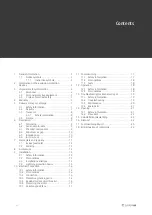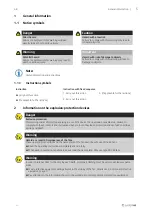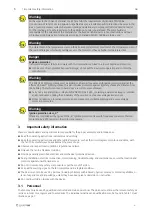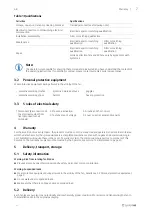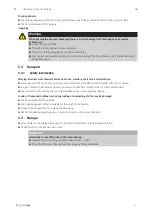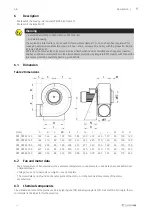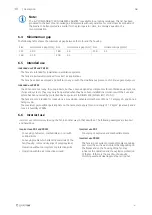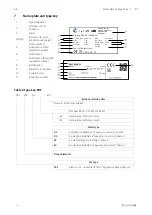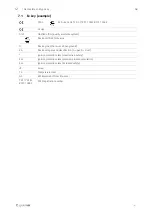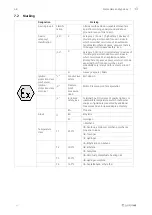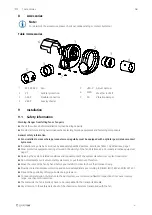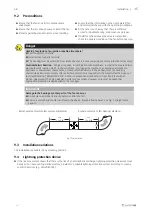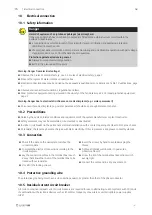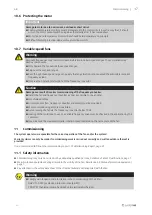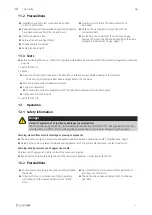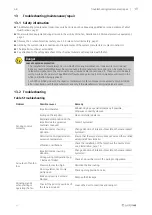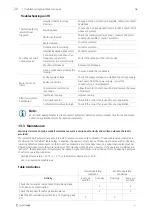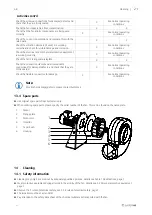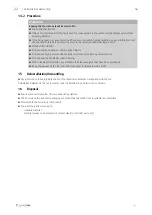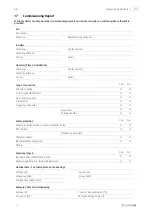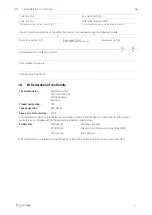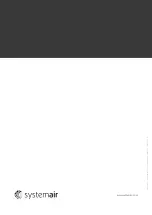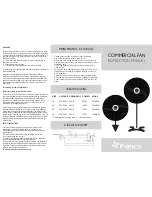
16
10
Electrical connection
10.1 Safety information
Danger
Hazard of explosion of an ignition-capable gas/air atmosphere!
If the wire ends which have not been connected are fitted to the external current circuits within the
explosion-capable area,
♦
a connection box selected to match this area with its own certification and explosion-protection
identification must be used.
♦
the electrical data, information on temperature monitoring and on admissible operation with part voltage,
if applicable, can be seen from the data sheet in question.
Protection against explosions in general:
♦
Always ensure potential compensation.
♦
Earth at the planned earthing point.
Warning: Danger from electrical voltage!
♦
Observe the 5 rules of electrical safety, see 3.3
♦
Prevent the ingress of water into the connection box.
♦
Electrical connection may only be carried out by adequately qualified persons, details see Table 1
♦
Observe and respect local conditions, regulations and laws.
♦
Wear protective equipment during all work in the vicinity of the fan, details see 3.2
Warning: Danger due to electrostatic influence on medical implants (e.g. cardiac pacemaker)!
♦
Persons with medical implants (e.g. cardiac pacemaker) should keep enough distance to the fan.
10.2 Preconditions
♦
Abide by the system-related conditions and requirements of the system manufacturer or plant constructor.
♦
Safety elements may not be dismantled, circumvented or deactivated.
♦
Install a circuit breaker in the permanent electrical installation, with a contact opening of at least 3 mm at each pole.
♦
Potentially, the fans may become charged with static electricity. If this represents a risk, please contact Systemair.
10.3 Connection
♦
Check if the data on the nameplate matches the
connection data.
♦
Complete the electrical connection according to the
circuit diagram.
♦
Lay the connection cables in the terminal box in such
a way that allows the cover of the terminal box to be
closed without resistance.
♦
Use all of the locking screws.
♦
Insert the screws by hand to avoid damaging the
thread.
♦
Tighten all glands well in order to guarantee
protection class IP.
♦
Screw the lid of the terminal box/inspection switch
evenly tight.
♦
Connect the cable end in a dry environment.
10.4 Protective grounding wire
The protective grounding must have a cross-section equal to or greater than that of the phase conductor.
10.5 Residual current circuit breaker
All-current-sensitive residual current circuit breakers are required for use in alternating-current systems with 50/60 Hz,
in combination with electronic devices such as EC motors, frequency converters or uninterruptible power supplies
(UPS).
| 002


